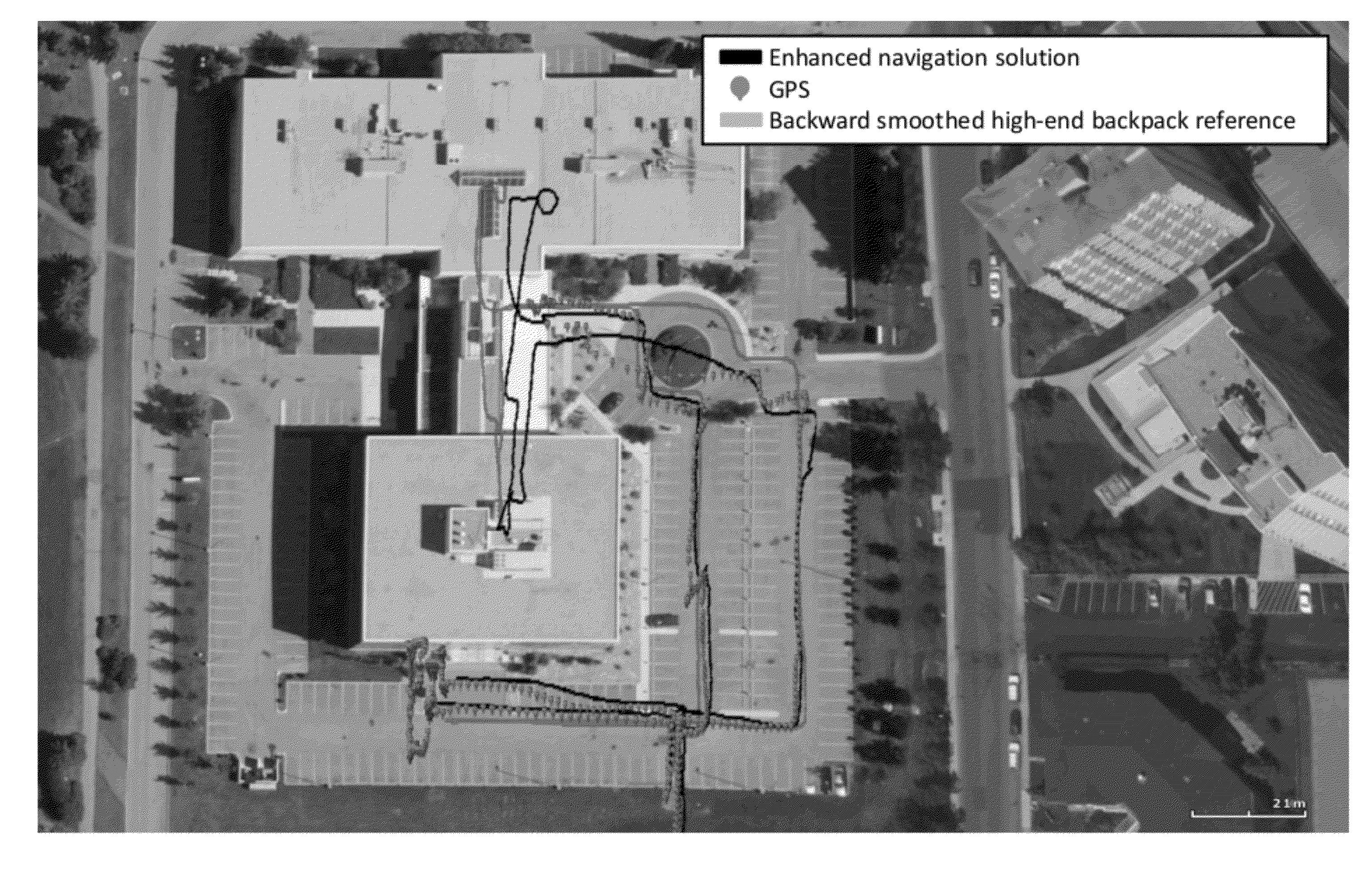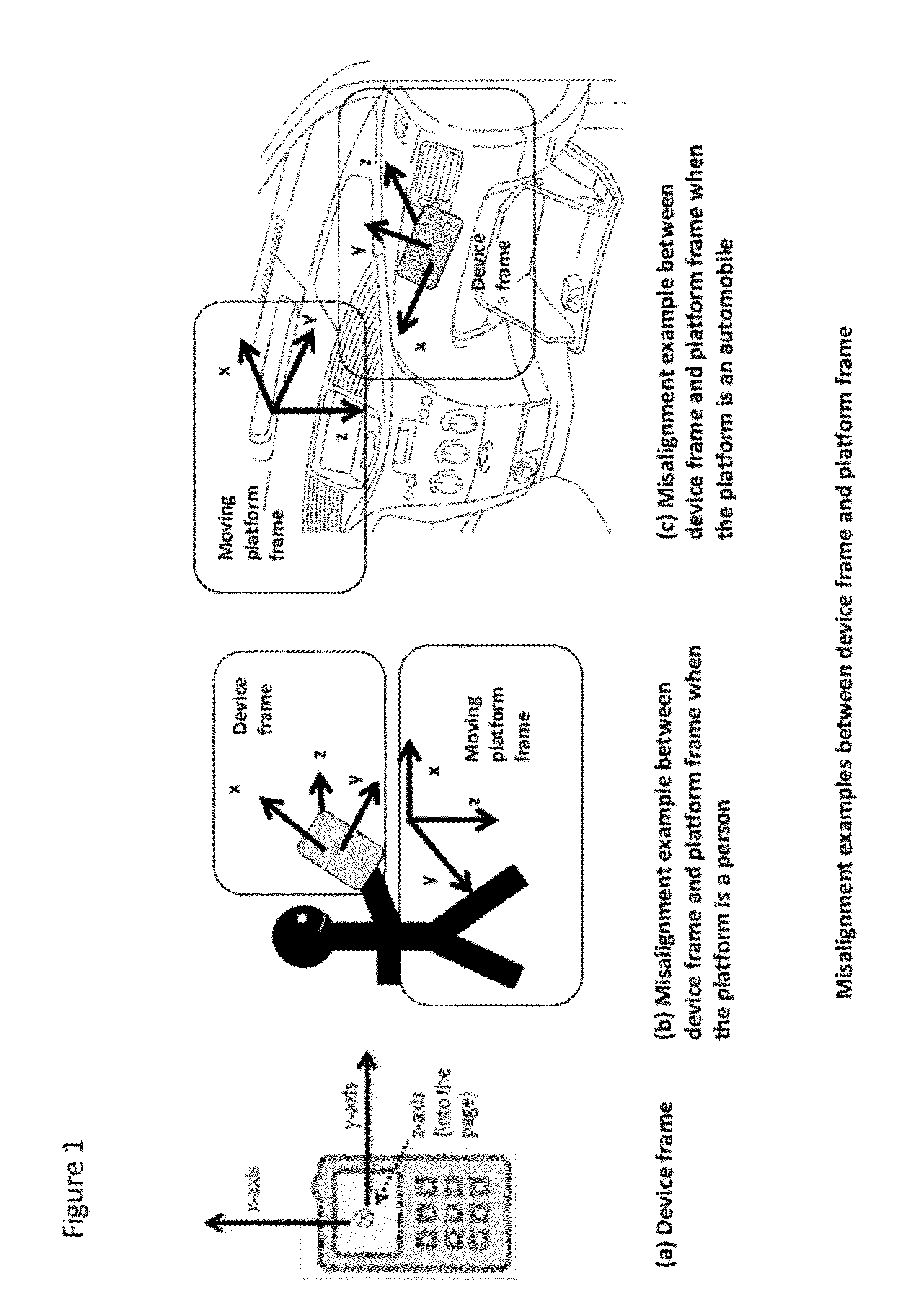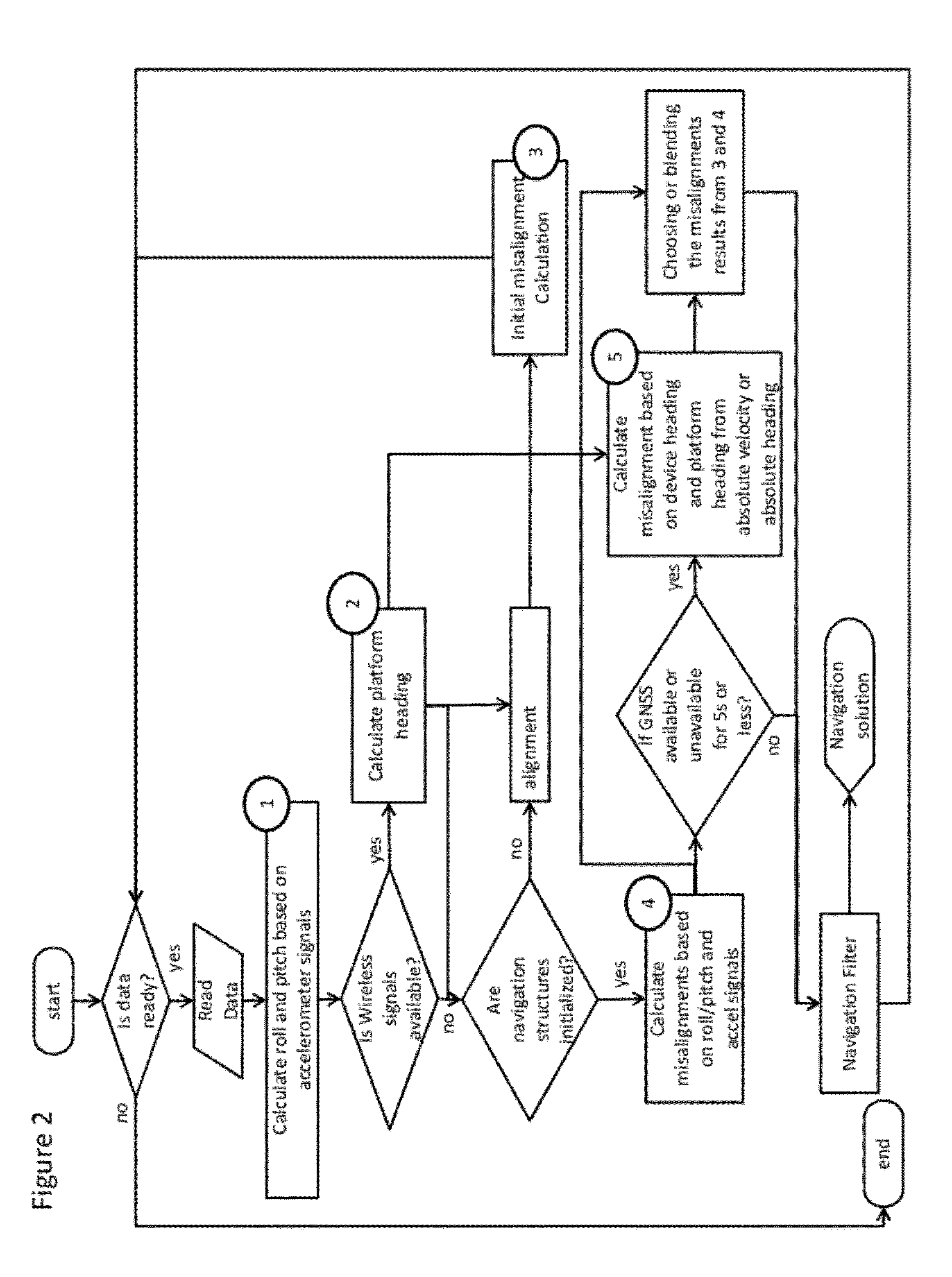Methods of attitude and misalignment estimation for constraint free portable navigation
a technology of attitude and misalignment estimation, applied in the direction of speed measurement using gyroscopic effects, instruments, navigation instruments, etc., can solve the problems of not meeting the requirements of accurate indoor localization, not meeting the requirements of today's location based services (lbs), and not providing the absolute heading of the platform, so as to reduce or remove the effect of orientation changes
- Summary
- Abstract
- Description
- Claims
- Application Information
AI Technical Summary
Benefits of technology
Problems solved by technology
Method used
Image
Examples
embodiment 1
[0068]It is known that, during normal use, the attitude of a device (e.g. portable phone) changes freely. Indeed, such devices often undergo rotational movements along any of their major axes (e.g. the x-axis, y-axis and z-axis) when positioned, for example, for texting in either landscape or portrait view, when positioned on a belt, or near a user's ear during phone use. Such axes are defined in FIG. 1, wherein the forward axis of the device is defined as x-axis, the vertical or z-axis is pointing downward and the transversal axis or y-axis is defined in a way to complete the right handed coordinate system.
[0069]It is also known that the orientation of a device within a platform is not representative of the orientation of the platform. The device may undergo any number of rotational movements along any of its major axes, with respect to the platform. These rotational movements of the device do not indicate that the platform is going through the same changes in orientation. For exam...
embodiment 2
[0084]It is known that absolute roll, pitch and heading are required for inertial navigation. Typically, absolute heading of a moving platform is estimated by taking the arctangent of east and north velocities from an absolute velocity source (such as a GNSS receiver). Where GNSS is unavailable (e.g. indoor environment), other known methods of calculating heading may be applied.
[0085]For instance, where a GNSS is unable to provide velocities of the moving platform, or the platform is not moving and the device has a calibrated magnetometer, the absolute device heading can be obtained using the two leveled horizontal components of the earth's magnetic field. Where a digital map is available, the absolute heading of the platform can be calculated from the map. The presence of a radio frequency positioning system other than GNSS can also be used estimate the heading based on the platform changes in position coordinates with respect to time provided that estimated positions are accurate ...
embodiment 3
[0119]As discussed, it is known that absolute roll, pitch and heading are required for inertial navigation. In some cases, heading of the device or platform may be determined through calculating and determining the initial heading misalignment between the device and the platform. Problems arise, for example, in gyroscope-based solutions where the initial heading of the device may be required in order to keep “track” of the device heading as it moves over time. This is because such solutions require an initial heading value for the device to start integrating the rotation rates of the device and to obtain the instantaneous heading of said device. As such, a technique for estimating the initial misalignment between the device and the platform is needed to finally calculate the initial device heading, where the initial device heading is not directly available but the initial platform heading is known.
[0120]In light of the foregoing, the present Embodiment 3 provides a method for enhanc...
PUM
 Login to View More
Login to View More Abstract
Description
Claims
Application Information
 Login to View More
Login to View More - R&D
- Intellectual Property
- Life Sciences
- Materials
- Tech Scout
- Unparalleled Data Quality
- Higher Quality Content
- 60% Fewer Hallucinations
Browse by: Latest US Patents, China's latest patents, Technical Efficacy Thesaurus, Application Domain, Technology Topic, Popular Technical Reports.
© 2025 PatSnap. All rights reserved.Legal|Privacy policy|Modern Slavery Act Transparency Statement|Sitemap|About US| Contact US: help@patsnap.com



